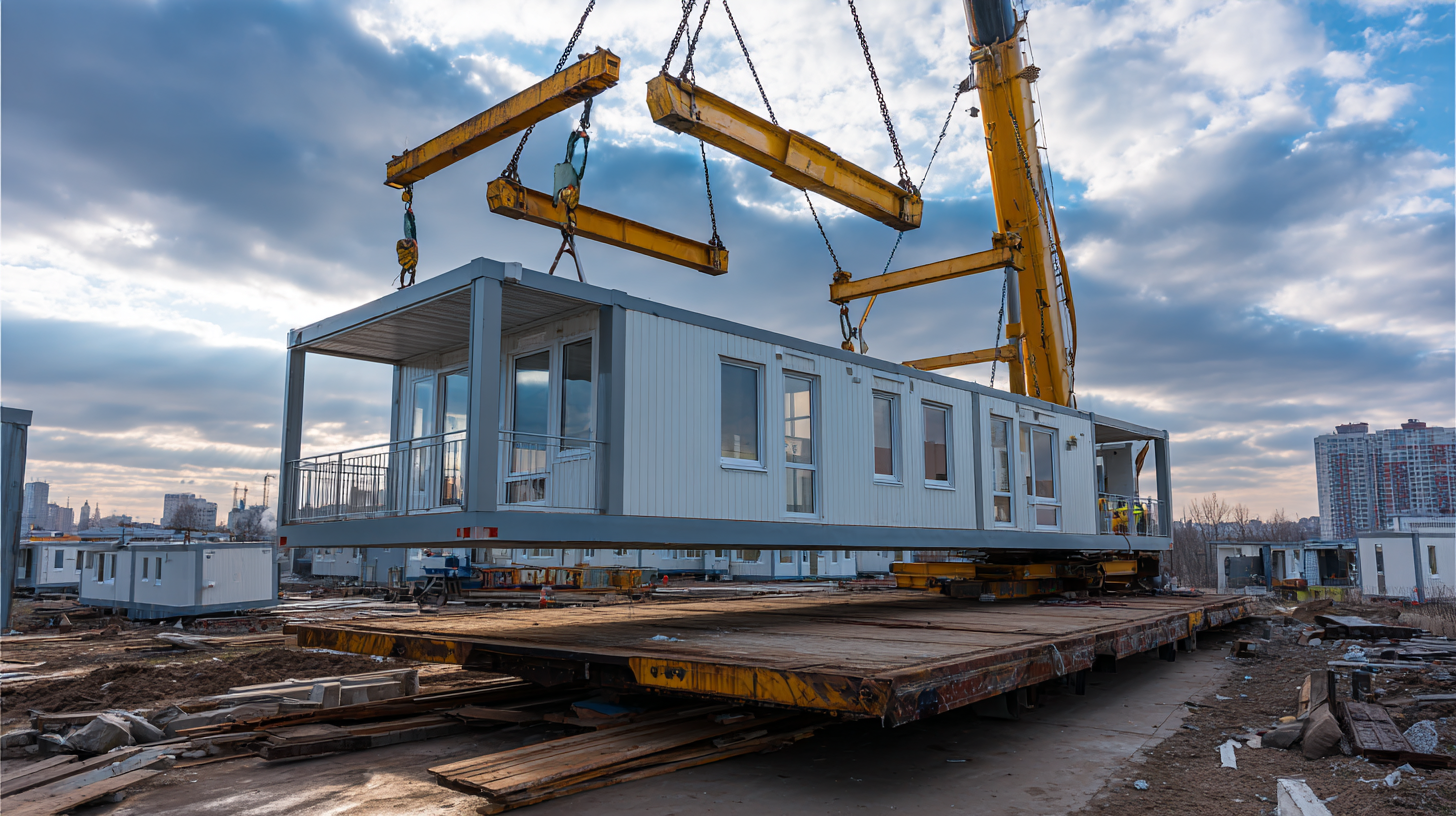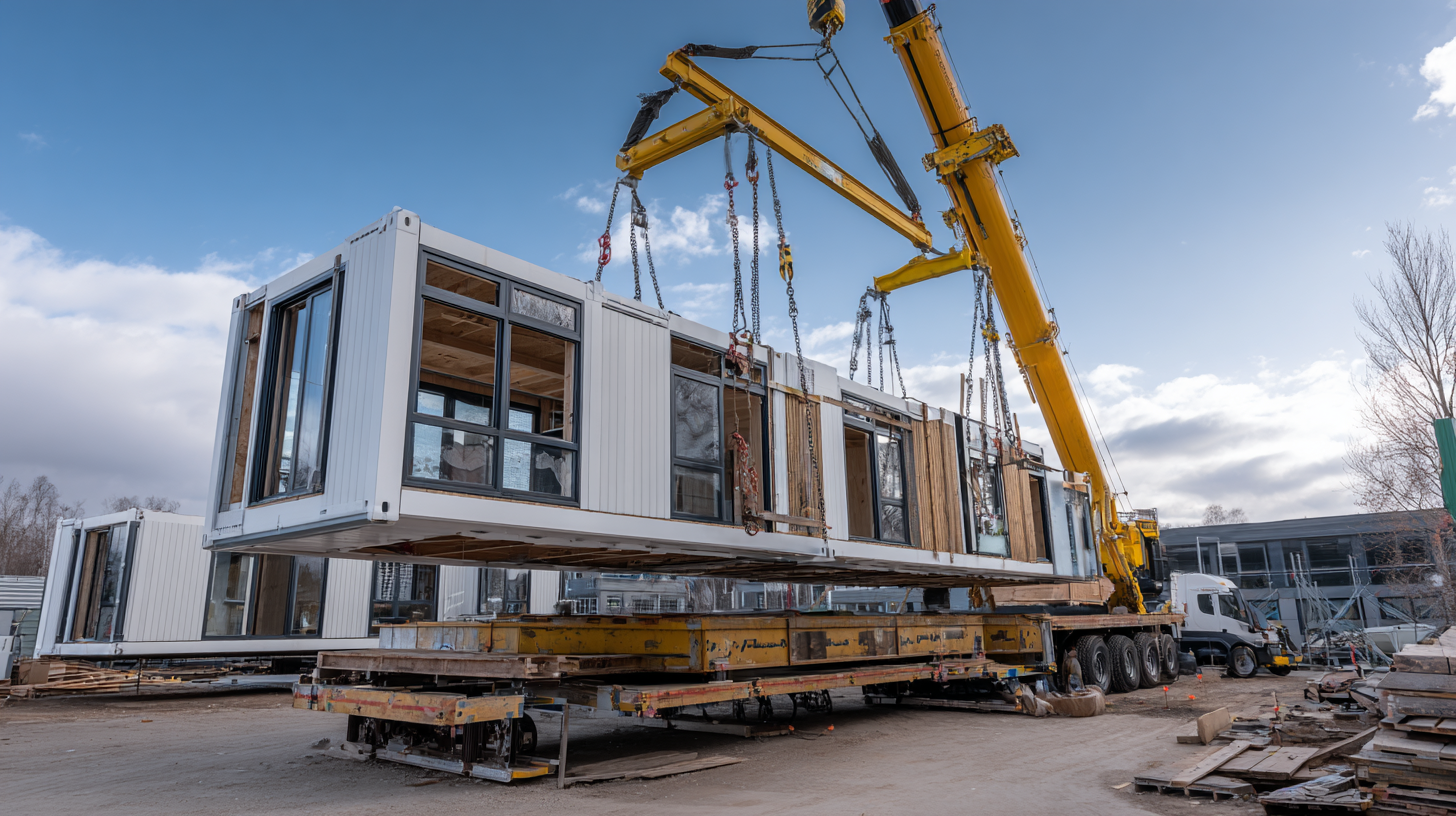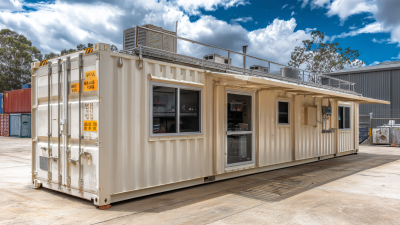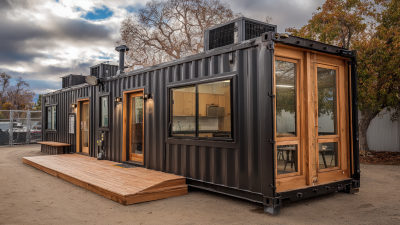Top 5 Innovative Advantages of Modular Construction in the Building Industry
The construction industry is undergoing a transformative shift, with modular construction emerging as a leading innovative method. According to a report by McKinsey & Company, modular construction can reduce project completion times by up to 50%, significantly improving efficiency and cost-effectiveness. This method involves prefabricating building components off-site, which not only accelerates the construction timeline but also minimizes waste and enhances overall quality.
Industry experts, like Andrew A. T. O'Brien, a well-regarded figure in modular construction, emphasize its potential, stating, "The future of construction lies in embracing modular approaches that respond to the increasing demand for speed, sustainability, and adaptability in modern buildings." With the construction sector facing rising pressures from urbanization and labor shortages, modular construction offers a viable solution to meet these challenges while pushing the boundaries of design and functionality.
As we delve into the top five innovative advantages of modular construction, it becomes evident that this method is not merely a trend but a necessary evolution in how we approach building projects. By harnessing modern technology and innovative practices, modular construction is set to redefine the landscape of the building industry, paving the way for smarter, more efficient infrastructure.

Revolutionizing Efficiency: Time-Saving Benefits of Modular Construction
Modular construction is increasingly recognized for its time-saving benefits in the building industry, fundamentally transforming how projects are executed. According to a report by McGraw Hill, modular construction can reduce project delivery times by up to 50% compared to traditional methods. This acceleration is primarily due to the simultaneous construction of modules off-site, which allows site preparation and building work to occur concurrently, minimizing delays caused by weather and other onsite disruptions.
Another significant advantage of modular construction is its efficient resource allocation. A study by the Harvard Business Review indicates that modular methods can lead to a reduction in waste by up to 90%, providing both economic and environmental benefits. This efficiency not only expedites the building process but also often results in lower overall costs. By leveraging advanced technologies and standardized components, modular construction firms can streamline operations and mitigate risks associated with traditional construction timelines.
**Tip:** When considering modular construction for your next project, assess the potential savings in time and resources, and explore partnerships with experienced modular builders to maximize these benefits. Additionally, keep in mind that early planning and design can significantly enhance efficiency, so involve all stakeholders from the onset for optimal results.
Top 5 Innovative Advantages of Modular Construction in the Building Industry
This chart highlights the time-saving benefits of modular construction compared to traditional construction methods.
Sustainability in Design: Eco-Friendly Aspects of Modular Building Techniques
Modular construction is revolutionizing the building industry with its emphasis on sustainability and eco-friendly design. By manufacturing building modules off-site, this method drastically reduces material waste, as precise measurements and controlled environments ensure minimal errors. This efficiency not only conserves resources but also contributes to a significant reduction in the carbon footprint associated with traditional construction processes.

Moreover, modular buildings are often designed with sustainability in mind, utilizing recyclable materials and energy-efficient systems. For instance, the integration of solar panels and green roofs into modular units promotes renewable energy usage and enhances biodiversity. Additionally, the rapid assembly time of modular construction minimizes disturbances to the surrounding environment, preserving local ecosystems and promoting a harmony between architecture and nature. As the building industry continues to evolve, modular construction presents a forward-thinking solution that aligns with global sustainability goals.
Cost-Effective Solutions: How Modular Construction Reduces Overall Project Expenses
Modular construction is rapidly gaining traction in the building industry, primarily due to its cost-effective solutions that significantly reduce overall project expenses. According to a report by McKinsey & Company, modular construction can cut project costs by 20% to 30% compared to traditional methods. This is mainly attributed to the streamlined construction process, where components are manufactured off-site in controlled environments, thus minimizing waste and labor costs. Additionally, the overlapping of design and construction phases allows for faster project timelines, translating into lower financing costs for developers.
Moreover, the use of modular construction can lead to fewer on-site delays caused by weather or labor strikes, which often inflate budgets. A study by the National Institute of Building Sciences shows that modular construction can reduce construction timelines by 30% to 50%, further decreasing overall labor costs and resource expenditures. This efficiency not only enhances profit margins for developers but can also provide affordable housing solutions in markets where building costs have skyrocketed. As the industry continues to embrace innovative practices like modular construction, the potential for substantial cost savings makes it a compelling choice for modern building projects.
Flexibility and Customization: Tailoring Modular Buildings to Client Needs
Modular construction has revolutionized the building industry by prioritizing flexibility and customization. One of the standout features of modular buildings is their ability to adapt to specific client requirements. With a variety of module sizes, designs, and finishes available, builders can create spaces that reflect the unique preferences of their clients. This customization extends to functionalities as well, allowing for diverse layouts that can accommodate residential, commercial, and industrial needs.
Moreover, the modular approach enables rapid construction without compromising quality. As modules are pre-fabricated in controlled environments, clients can witness the production process, ensuring that their specifications are met meticulously. Once onsite, these modules can be assembled quickly, resulting in reduced downtime and minimized project costs. This level of customization and efficiency not only enhances client satisfaction but also positions modular construction as a forward-thinking solution in an increasingly competitive market.

Enhanced Safety Protocols: Protecting Workers in Modular Construction Settings
In the realm of modular construction, enhanced safety protocols have emerged as a key advantage, significantly improving worker protection. Unlike traditional construction methods that often subject workers to hazardous on-site environments, modular construction takes place primarily in controlled factory settings. This shift not only reduces exposure to unpredictable weather conditions but also minimizes the risk of accidents associated with scaffolding and heavy machinery. With assembly-line practices in place, workers can carry out their tasks with greater efficiency and focus, leading to a safer overall workplace.
Moreover, modular construction incorporates advanced technologies to bolster safety measures. Real-time monitoring systems and digital training programs ensure that workers are well-informed about potential hazards and proper usage of equipment. Additionally, the prefabrication process allows for thorough inspections and quality control before components are transported to the construction site. This proactive approach further mitigates risks, creating a safer environment for all involved. Overall, the integration of these enhanced safety protocols is transforming how the building industry prioritizes worker health and safety in the modular construction sector.
Related Posts
-

Exploring the Benefits of Converted Container Homes for Sustainable Living
-

Top 10 Tips for Choosing Modular Container Buildings for Your Next Project
-

Revolutionizing Modern Architecture: The Rise of Cargo Container Construction in Sustainable Living
-

Transform Your Space: How Custom Built Shipping Containers Revolutionize Sustainable Living Solutions
-

Exploring the Future of Sustainable Living with Innovative Shipping Container Fabrication
-

Innovative Cargo Container Buildings Transforming Urban Living Spaces

